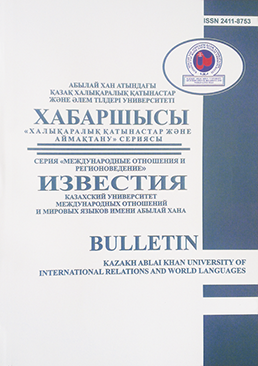NEW TRENDS IN REGIONAL INTEGRATION AND THEIR IMPACT ON THE COUNTRIES OF CENTRAL ASIA
DOI:
https://doi.org/10.48371/ISMO.2023.52.2.006Keywords:
integration, region, Central Asia, cooperation, new trends, open economy, window of opportunity, economic diplomacyAbstract
Integration is one of the most important aspects in contemporary international relations. In the context of constantly changing geopolitical and geoeconomic situations, new global and regional integration trends that affect the foreign policy strategies of states are emerging. Nowadays, regionalization can be considered one of the main trends in international relations due to a variety of socio-economic factors: the changing role of certain regions in global politics, the current regional labor division and the existing common cultural identity of regional ethnic communities. There is no question that the strengthening of regional cooperation and integration is crucial to the accomplishment of political, military, and environmental security as well as the long-term and sustainable economic prosperity of the area.
The authors of this article present their opinion on the impact of new cooperation/integration trends in Central Asia. The issues raised in the article are analyzed through the prism of theories that explain the nature of new integration trends. The possibility of the Central Asian states to adapt to the new conditions of integration is associated with the methodological problems of interaction between states in the face of new opportunities. In order to attain the objectives of economic growth, modernisation, and country development, regional cooperation is objectively necessary for Central Asia. The development of regional unity among the Central Asian nations is the primary means of preventing disintegration of the area.







